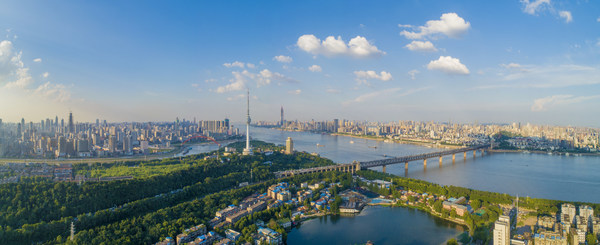BEIJING, Oct. 26, 2022 /PRNewswire/ — A news report from chinadaily.com.cn

Wuhan is located at the confluence of the Yangtze and Han rivers, with 166 lakes and rich wetland resources
The Chenhu wetland in Wuhan, capital of Hubei province, has become a paradise for waterfowls thanks to sustained efforts in wetland conservation and green development.
Covering an area of 11,600 hectares in Caidian district, it is the city’s first provincial-level wetland nature reserve. It has an abundance of wildlife, including four plant species and 64 bird species under national special protection, according to the administrative bureau of the reserve.
Feng Jiang, a forestry engineer who has worked in the reserve since 2007, recalled that the Chenhu wetland had been plagued by aquaculture for many years.
“In the past, many local villagers operated fishponds and water plant farms in the wetland,” Feng said.
But now these pools are home to flourishing lotuses, reeds and a variety of birds. The change is a result of a restoration project launched by the district government in 2019.
Feng said the project involved demolishing illegal buildings, moving aquaculture activities out of the reserve, and restoring 1,400 hectares of degraded wetlands.
In collaboration with Beijing Forestry University, the bureau established a monitoring system powered by artificial intelligence to improve the wetland’s management and protection.
“We have installed 59 internet of things devices around the wetland to capture extensive data. Based on this, the smart system can identify species, monitor the environment and track birds,” Feng said.
Last winter, a total of 85,000 migratory birds were observed in the wetland, a record high over the past three years, according to data from the bureau.
“A bird-watcher told us he saw a Chinese merganser in November last year,” said Tan Wenzhuo, an inspector of the Chenhu wetland reserve.
“Those ducks are picky about water quality, food and the environment. Its appearance indicated that Chenhu has a healthy ecosystem,” Tan added.
During the past five years, Wuhan has returned 6,333 hectares of fishponds and about 667 hectares of farmland to wetlands.
Wetlands across Wuhan now occupy 162,000 hectares, accounting for 18.9 percent of the city’s total area. Included in the city’s wetland network are 63,500 hectares of small and micro wetlands and six national wetland parks.
In June, Wuhan was awarded a wetland city accreditation by the Ramsar Convention on Wetlands.
The 14th meeting of the Conference of the Contracting Parties to the Ramsar Convention on Wetlands will be held on Nov 5-13. The main venue is to be in Wuhan with a parallel session in Geneva, Switzerland. It will be the first time China hosts the international event.
The meeting will discuss the future development of the convention, announce a new batch of wetlands of international importance, and tell the Chinese story of harmonious coexistence between humans and nature, an official from the National Forestry and Grassland Administration said.















